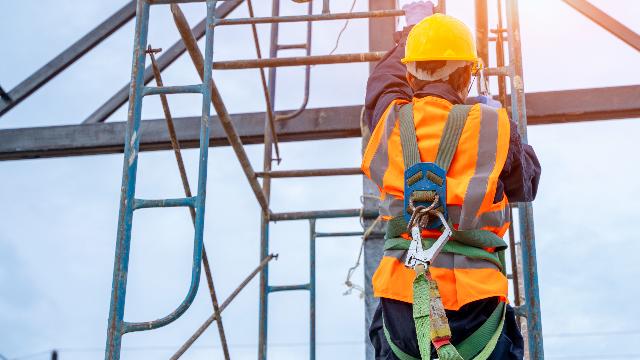Deepen safety expertise with our updated HSC & HSR Foundations course. Covering mandatory training, employer obligations, and recent legislative changes.
Fall Protection Fundamentals – Working at Heights
Fall Protection Fundamentals - Working at Heights
What is Fall Protection Fundamentals – Working at Heights?
Every year, falls from heights cause thousands of workplace injuries across industries. To keep workers safe and ensure compliance with local health and safety standards, proper training is essential. The Fall Protection Fundamentals course is designed to give participants the knowledge and confidence to perform tasks safely, while meeting provincial regulatory requirements.
Course Overview
Falls are one of the most frequent causes of serious accidents in workplaces. Even experienced employees can be at risk if fall protection systems aren’t properly understood or applied. This online program introduces participants to the fundamentals of fall protection, teaching them how to identify hazards, understand workplace responsibilities, and use personal protective equipment effectively.
Learners will explore the correct use of harnesses, anchors, and connectors, as well as best practices for inspection, maintenance, and storage. The course also highlights fall clearance calculations, safe handling of tools at heights, and emergency response procedures.
Additionally, participants will review rescue planning, suspension trauma prevention, and self-rescue methods, all aligned with occupational health and safety legislation so they’re fully prepared for real-world situations.
- Worker obligations under occupational health and safety laws
- Dangers associated with height-related work activities
- Safety equipment for fall prevention (anchorage, connectors, safety harnesses, and body support systems)
- Guidelines for storage and upkeep of fall protection gear
- Other personal protective equipment required
- Hazards of uncontrolled descent
- Clearance distances necessary for effective fall arrest
- Handling tools and machinery safely when working at heights
- Emergency action planning for incidents
- Rescue operations (self-rescue, dealing with suspension trauma, use of rescue devices, etc.)
Estimated completion time: 90 minutes
An 80% minimum is required to pass. Participants have up to three attempts to achieve the passing score.
Upon successfully completing the course, learners can download and print a certificate of completion.
Course Preview
Duration
Average Completion Time
Completion times vary depending on the number of times the information is viewed prior to finishing the course. The average completion time is 20 minutes.

Testing
Knowledge Assessment
Testing is conducted in this online course to reinforce the information presented. You are provided three opportunities to achieve a passing mark of 80% or greater.

Certificate
Certificate of Completion
Upon successful completion of this course, a certificate will be available to download and print. You can access your certificate through your online account.

Get Your Recognized Fall Protection Fundamentals - Working at Heights Course Certificate Today!
Get Your Recognized Fall Protection Fundamentals - Working at Heights Course Certificate Today!
Get your Fall Protection Fundamentals – Working at Heights Certificate in as little as 35 minutes!






































